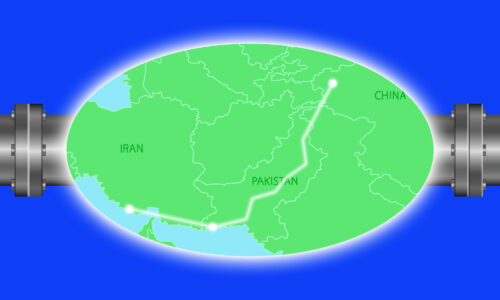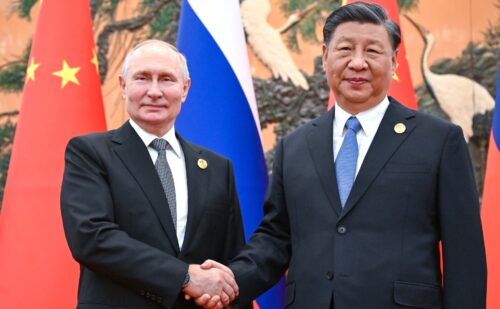Guns and debt on the Belt and Road

Xi Jinping’s signature Belt and Road Initiative and hype about it keeps on growing — last week, the People’s Daily even tweeted that a new direct flight between the U.K. and Chengdu is launching, “boosted by China’s Belt and Road.”
But that does not mean that other Belt and Road projects are not real, even if they had already begun before Xi’s slogan team coined the B&R moniker. Here’s an update from a few regions and projects where the Belt and Road will be defined:
SRI LANKAN NAVY MOVES BASE TO CHINESE-CONTROLLED PORT
“Sri Lanka is shifting a naval base to a port built and controlled by China, it said on Monday, a move that will strengthen security at a harbor that foreign powers fear China could use for military purposes,” reports Reuters.
- “The base currently in the tourist district of Galle will be moved 125 km (80 miles) east along Sri Lanka’s southern coast to Hambantota,” which is the multibillion-dollar port under a 99-year lease to China Merchants Port Holdings.
- Hambantota is perhaps the most advanced of the international projects that are now deemed Belt and Road. Naturally, it is not without controversy: For a brief history of Hambantota and Chinese involvement in Sri Lanka, see this The China Project Access page — we’ve opened the paywall so you don’t need to be a member to read it.
- “Concerns that China might use the port as a naval base” have been raised by the U.S., India, and Japan, according to “government and diplomatic sources” cited by Reuters in the article linked above.
- “No need to fear,” says Sri Lankan Prime Minister Ranil Wickremesinghe. “Sri Lanka has already informed China that Hambantota port cannot be used for military purposes.”
- A New York Times investigation, published last week (paywall), revealed the hardline Chinese negotiation tactics that led to Sri Lanka taking on monumental amounts of debt, ending with the ceding of the port ownership to China. The Times also wrote that “intelligence sharing was an integral, if not public, part of the deal,” according to Sri Lanka’s former foreign secretary. Today, the Chinese foreign ministry dismissed the report as “fake news.”
RESENTMENT IN PAKISTAN?
If there is one Belt and Road-rebranded project more advanced than the port of Hambantota, it is the China-Pakistan Economic Corridor (CPEC). The Crisis Group has published a comprehensive and detailed excellent report on CPEC Opportunities and Risks.
- “Is China’s US$62 billion investment plan fuelling resentment in Pakistan?” That’s the headline of the South China Morning Post take on the Crisis Group report. The article pulls this quote from the original report: “Pakistan’s economy clearly needs reform to better serve its people, and many officials say CPEC will help in this regard. But as currently rolled out, the corridor risks aggravating political tension, widening social divides, and generating new sources of conflict in Pakistan.”
CHINESE MILITARY AND LENDING IN AFRICA
Chinese entities are investing in Bagamoyo, an Indian Ocean port in Tanzania, and China Digital Times has a roundup of related news titled China to increase military role in Africa.
- In “Tanzania, where the state-run conglomerate China Merchants Holdings International is hoping to invest in the Bagamoyo mega port, China built a complex designed to train local armed forces earlier this year.”
- “At the first-ever China-Africa Defense and Security Forum in Beijing on Tuesday,” China announced that it would give “comprehensive support” to African countries to help combat piracy and terrorism, including “technologies, equipment, personnel and strategic advice.”
- “China has extended its position as Kenya’s biggest lender, with the Sh534 billion [$5.3 billion] it had disbursed in loans by the end of March raising its share of Kenya’s bilateral debt to 72 percent,” reports Kenya’s Business Daily.
KAZAKH TENSIONS
Xi Jinping first proposed the Belt and Road as the “Silk Road Economic Belt with Central Asian Countries” during a visit to Kazakhstan in 2013. But that does not seem to have spared ethnic Kazakhs who are Chinese citizens, and even citizens of Kazakhstan itself, from being swept into the gulags of Xinjiang. In May, Open Democracy reported:
After its continuing persecution of Uyghurs, the Chinese authorities have now turned their attention to ethnic Kazakhs living in the Xinjiang Uygur Autonomous Region (XUAR) in northwest China. There are few details available, but Radio Free Asia has reported that up to 500 Kazakhs can be arrested in a week and that several tens of thousands of families have had their homes searched. Kazakhstan’s Ministry of Foreign Affairs has, however, taken very little interest in both Kazakh citizens and Chinese Kazakhs…
…Now the Kazakh government finds itself in a predicament: its inaction is drawing criticism from both its own citizens and repatriates, while it is significantly financially dependent on Chinese investments and loans.






